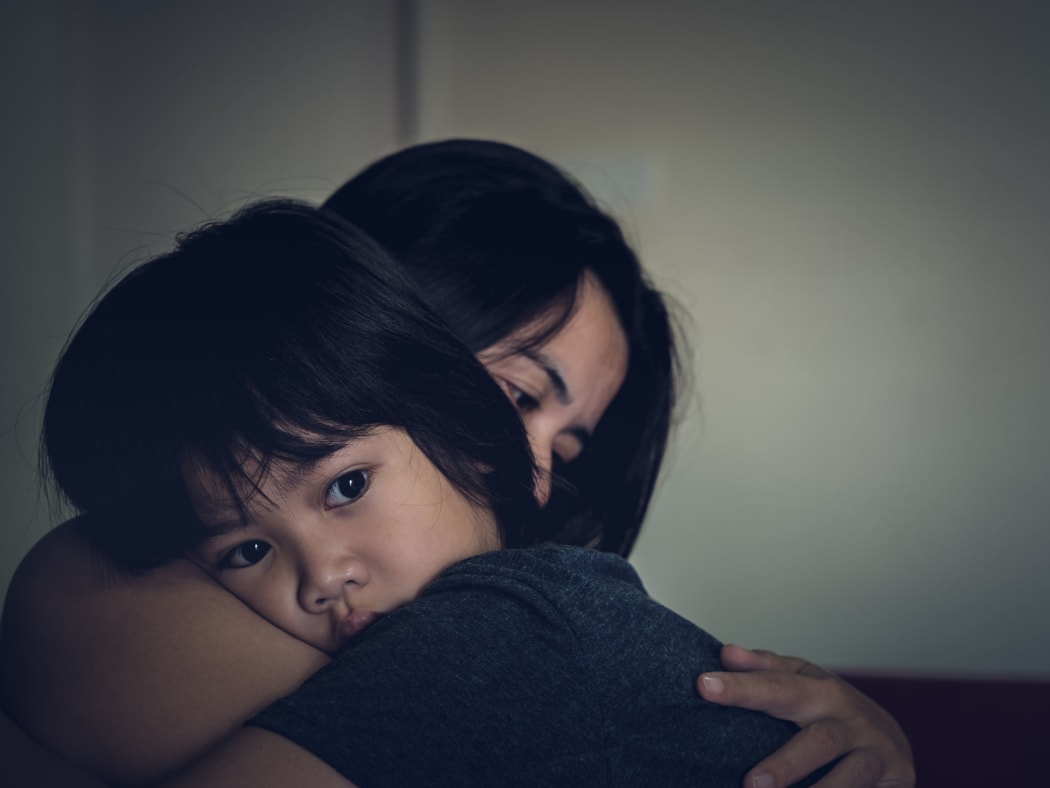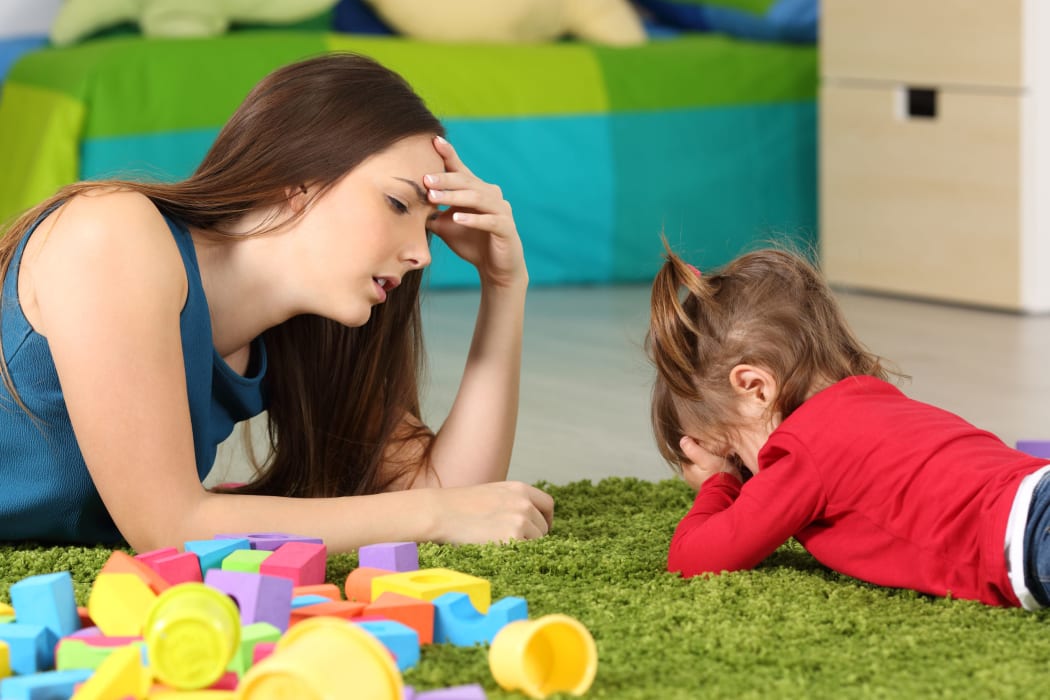The number-one driver of mental illness is isolation, says parenting commentator and educator Nathan Wallis, therefore it’s especially important for children to form healthy attachments in the first three years of life.
Humans are interdependent by nature, and being socially connected gives our brain the peptides and positive hormones that it needs to stay well, Wallis says.

Photo: spukkato/123RF
Wallis tells Nine to Noon's Kathryn Ryan that forming secure attachments gives our three types of brains (survival, movement, and emotional) what they need to successfully develop the fourth – that is responsible for things like higher intelligence, control of emotions and planning for the future.
“Attachment theory is recognising that and then realising that human beings have this emotional limbic brain that needs to be engaged because it's the foundation of your cortex.
“We're talking about the dyadic relationship, which means a one-on-one relationship. So that just basically means that your outcomes are not just driven by your genes for your brain, your outcomes are a combination between your genes and the environment, and the environment is largely this dyadic relationship.”
As a result of receiving this loving and caring attachment, a baby’s stress responses can be calmed, Wallis says.
“When you receive that consistently, even in the first year of life, and consistently your stress response system has been calmed, that attachment then allows you to grow this brain number – this wonderful brain number four – it calms the human stress response system.
“So attachment is related to biology, we need it or else we would remain much more animalistic and much more in our brainstems and focused on survival.”
Validating to control emotions
Wallis recommends that parents ensure they validate their child’s feelings before approaching their parental duties to guide them, in order to induce the calming responses necessary for the ‘fourth brain’.

Photo: 123rf
Validating is hearing a child's emotion and reflecting it back to them, he says.
“That's always key with a child, with anyone in trauma, that limbic system is going to take over. And 99 percent of their worldview is the emotion and we might be calm and rational, but that's 1 percent of their worldview.
“So in order to get that 1 percent and grow it, and to allow them to calm down and to calm that emotion, you have to speak to the emotion, you have to validate it. The worst thing you can do to a person who's losing the plot is to say 'calm down', that's never made anybody calm down because that's the opposite to validating.”
Looking at the brain scan of an emotional person, the amygdala and limbic system will look more active, meaning there’s less energy left for the frontal cortex, Wallis says.
But when you tell a person that you recognise how they feel, there's an immediate electrical reduction of activity in the amygdala, which means more of that frontal cortex can be active.
“So even down to the biology, you can see human beings really need validation and they need you to hear that emotion.”
It’s surprisingly simple yet effective, even on children who throw tantrums over things they don’t obtain, he says.
To put it simply, if you go straight to problem-solving then you’re nagging but if you validate the emotions first then move on – and not necessarily immediately after – then you’re helping.
Another step ahead, if that doesn't work...
If a child is still having issues to calm down or reduce their stress response, there are some strategies for parents to employ, Wallis says.

Photo: 123RF
“The brain really likes to better predict things. So if you're always doing that – you have dinner, and then you have a bath, and then we read three stories, and then I sing those two songs, and I say that same thing as I shut the bedroom door – that repetitive stuff, the brain really likes that and gets really calm and secured by that.”
Another way to help calm your kids is to dedicate a set amount of time during the week, say 10 minutes, where you stop being their parent and instead just play with them.
“All the rules of you being a parent are put aside. And for that 10 minutes, you do anything that the kid wants you to do, and they're in charge. Now it's not to ridiculous levels, you're not allowed to hurt yourself or anything.”
A strategy like this might be useful for a child who feels they’re not heard and has trouble calming down or a lot of anxiety, Wallis says.
Giving a child even this short period where they’re allowed to be in control can put them at some ease and help them express themselves more comfortably, he says.
“This might take three or four weeks, but your child will eventually work out that you're actually prioritising that and you're actually making that available and you're actually not correcting them and you're not changing the rules and not being in charge.
“A lot of kids' problems are about not feeling heard or their worldview is not validated, because it's seen from a child's point of view, and to an adult that's silly.”
Attachment beyond childhood
It isn't just during childhood that secure attachment needs to be fostered, Wallis says. Most people need that nurturing to continue up to somewhere between 18 and 32 years of age.
Humans are an interdependent species, despite some of us assuming complete independence once we hit adulthood.

Photo: 123RF
“[Young people] are absolutely going to need nurturing until then because that brain that controls emotions is not going to be fully developed until then. So you need someone to help you calm those emotions.
“As a baby, you do it all for them in that first year, you're doing everything to calm their emotions. When they're 18 they're probably calming their emotions most the time until they have their breakup with a girlfriend or something, and then it's all your job again.”
Wallis understands it can often be difficult to know how to strike a balance between your child’s nurture and independence when they reach adulthood or seek to move out for university.
“You’ve got to keep an open line of communication with that child, they've got to feel like no matter what wild risk-taking and experimenting that they're doing that there is always an open line of communication to you and that you will help them first and judge them and tell them off second.”
Sometimes teenagers might give you contradicting messages or signals about not really needing your presence, Wallis says, but it’s still vital to keep the door open and let them know you’re always there.
Self-parenting as adults
Just as important as connection is young adults learning to self-parent, Wallis says.
“Everyone's got that voice inside their head, in fact. And it's just whether is that voice inside your head loving and nurturing you and your best friend? Or is that voice inside your head more like a critical parent, or someone telling you that you're not good enough, that you're not tall enough, that you're not clever enough, that you're not skinny enough, that you're not pretty enough?”
There’s a unifying theme among theorists that at some point individuals have to take control of their own inner voices, or self-talk, Wallis says.
“You have to train that voice inside your head to be your best friend and not be critical.”
Your best friend may challenge you wisely, but they won’t be mean about it like some self-talk can be, he says.
“The mirror surprisingly works for that – talking to yourself face in the mirror. I know it might sound stupid, but it's amazingly effective on the brain.”
Self-parenting can also help with resilience in tough times, Wallis says.
Ask yourself is “if I was my own best friend, how would I treat myself?”

